US missile defense system. 2-Part I
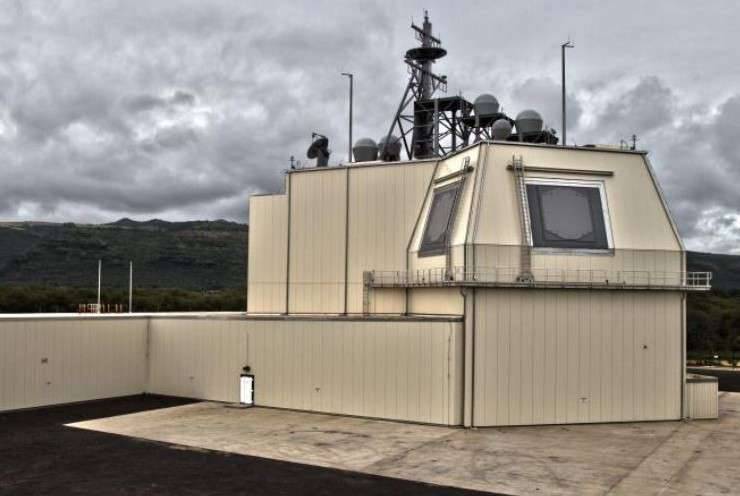
Next time about missile defense weapons in the USA they remembered in the early 80s when, after President Ronald Reagan came to power, a new round of the Cold War began. March 23, 1983 Reagan announced the start of work on the Strategic Defense Initiative (SDI) project. This project to defend US territory from Soviet ballistic missiles, also known as Star Wars, called for the use of anti-ballistic systems deployed on earth and in space. But unlike previous anti-missile programs based on interceptor missiles with nuclear warheads, this time the stake was on the development of weapons with other damaging factors. It was supposed to create a single global multicomponent system capable of repelling the attack of several thousand warheads of Soviet ICBMs in a short time interval.
The ultimate goal of the Star Wars program was to gain dominance in the near space and create an effective anti-missile "shield" to reliably cover the entire continental United States by deploying several echelons of space attack weapons on the way of the Soviet ICBMs capable of fighting ballistic missiles and their combat units on all phases of flight.
The main elements of the missile defense system were planned to be placed in space. For the destruction of a large number of targets, it was envisaged to use active weapons based on new physical principles: lasers, electromagnetic kinetic guns, beam weapons, as well as small-sized interceptors of kinetic action. The refusal of mass use of nuclear missile missiles was due to the need to preserve the operational state of the radar and optical detection and tracking. As is known, after nuclear explosions in space, an area impermeable to radar radiation is formed. And optical sensors of the cosmic component of the early warning system are likely to be disabled by an outbreak of a nearby nuclear explosion.
Subsequently, many analysts came to the conclusion that the Star Wars program was a global bluff, with the goal of drawing the Soviet Union into a new devastating arms race. Investigations within the framework of SDI have demonstrated that most of the proposed space-based weapons of destruction, for various reasons, could not be implemented in the near future or could be easily neutralized by relatively inexpensive asymmetric methods. In addition, in the second half of the 80s, the degree of tension in relations between the USSR and the USA significantly decreased, and the likelihood of a nuclear war decreased accordingly. All this led to the abandonment of the creation of an expensive global missile defense. After curtailing the SDI program as a whole, work in a number of the most promising and easily implemented areas continued.
In 1991, President George W. Bush - Sr. came up with a new concept of creating a national missile defense system (“Protection against limited strike”). Within the framework of this concept, it was intended to create a system capable of repelling the impact of a limited number of missiles. Officially, this was due to the increased risks of the proliferation of nuclear technologies after the collapse of the Soviet Union.
In turn, US President Bill Clinton 23 July 1999, signed a bill to develop the National Missile Defense (NMD). The need to create NMD in the United States was motivated by the “growing threat of rogue states creating long-range missiles capable of carrying weapons of mass destruction.” Apparently, it was then that the United States made a principled decision to withdraw from the 1972 Treaty of the year on limiting missile defense systems.
October 2 1999 in the United States conducted the first test of a prototype NMD, during which the Minuteman ICBM was intercepted over the Pacific Ocean. Three years later, in June 2002, the United States officially notified its withdrawal from the 1972 Treaty of the year to restrict anti-ballistic missile defense systems.
Working ahead of the curve, the Americans began upgrading the existing stations of the early warning system and building new ones. At the moment, in the interests of the NMD system, 11 of different types of radar stations are officially involved.
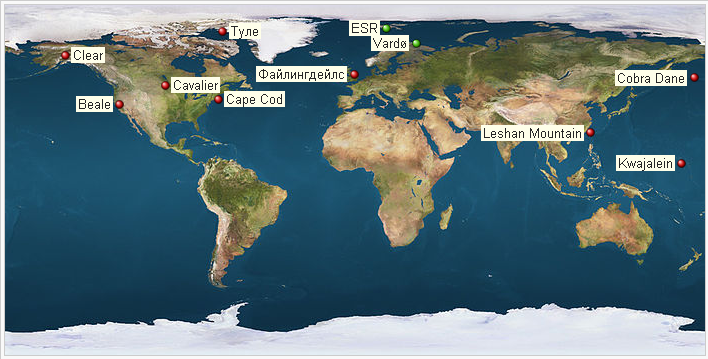
AN / FPS-132 has the greatest potential in terms of the detection range and the number of escorted objects among the stationary radar radar detectors. These over-the-horizon radar stations are included in the SSPARS system (The Solid State Phased Array Radar System) - solid-state radar systems with a phased antenna array. The first radar of this system was AN / FPS-115. At present, almost all AN / FPS-115 stations are replaced by modern ones. One radar of this type in 2000, despite the protests of the PRC, was sold to Taiwan. The radar is installed in a mountainous area in Hsinchu County.
Experts believe that Americans were selling "several birds with one stone" by selling AN / FPS-115 radar to Taipei - they were able to profitably attach, if not the newest, but still workable station. Without a doubt, Taiwan is broadcasting a “radar image” in real time in the United States, while paying for the cost of maintaining and maintaining the radar. The benefit of the Taiwanese side in this case is the ability to observe rocket launches and space objects over the territory of the PRC.
At the end of 80, the Americans replaced the SSPAR system with old SPRN stations in Greenland, not far from Thule airbase and in Great Britain in the town of Faylingdeyles. In 2000-s, these radars were upgraded to AN / FPS-132. A unique feature of the radar stationed in Faylingdeyls is the possibility of circular scanning of space, for which a third antenna mirror was added.
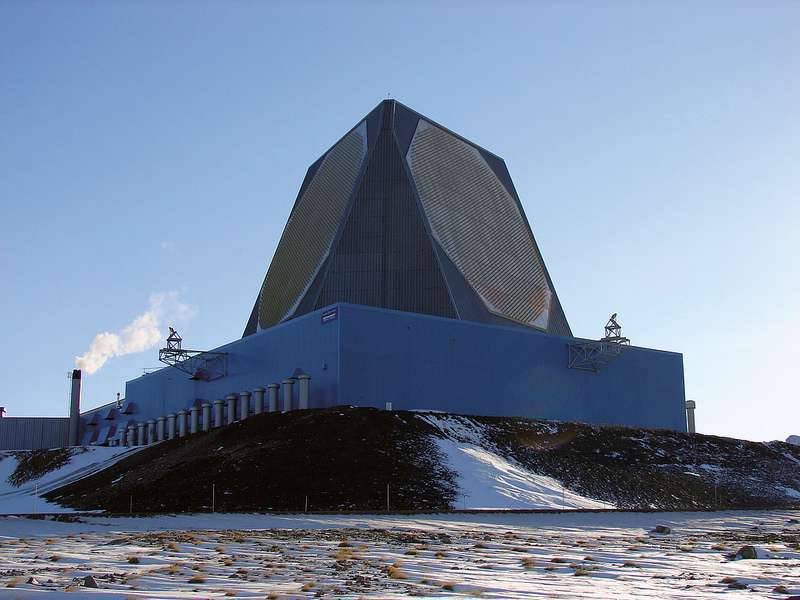
On the territory of the United States, the radar anti-missile system AN / FPS-132 is located at Beale airbase in California. It is also planned to upgrade to this level the AN / FPS-123 radar at Clear Air Base, Alaska and Millstone Hill, in Massachusetts. Not so long ago it became known about the US intention to build an SSPAR radar system in Qatar.
In addition to the radar SPRN system SSPAR at the disposal of the US military there are a number of stations of other types scattered around the world. On the territory of Norway, which is a member of NATO, there are two objects involved in observing space objects and rocket launches from the territory of Russia.
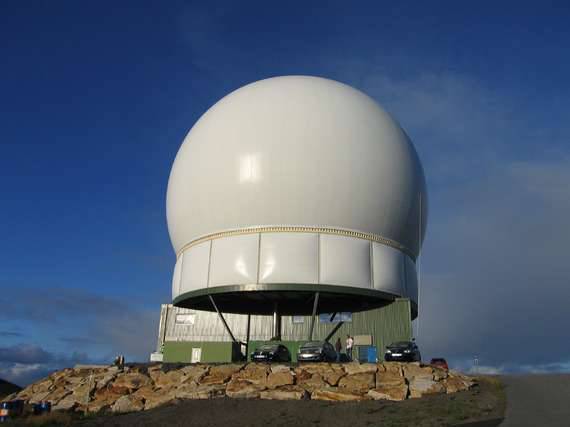
In 1998, the AN / FPS-129 Have Stare radar, also known as Globus II, began operating near the Norwegian city of Vardø. The 200 kW radar has an antenna with a diameter of 27 m in a radome with a diameter of 35 m. According to statements by US representatives, its task is to collect information about "space debris" for the safety of space flight. However, the geographical location of this radar allows it to be used to track the launches of Russian missiles at the Plesetsk test site.
The location of Globus-II makes it possible to fill a gap in the geosynchronous radar tracking coverage between the Millstone Hill radar in Massachusetts and the ALTAIR radar on Kwajalein. Currently, work is underway to extend the resource of the AN / FPS-129 Have Stare radar in Vardø. It is assumed that this station will be operated at least until 2030 year.
Another "research" American object in Scandinavia is the radar complex EISCAT (eng. European Incoherent Scatter Scientific Association - European non-coherent joint research). The main radar EISCAT (ESR) is located on Svalbard not far from the Norwegian town of Longyearbyen. Additional receiving stations are available in Sodankylä in Finland and in Kiruna in Sweden. In 2008, the complex was upgraded, along with mobile parabolic antennas, a fixed antenna with a PAR.
The EISCAT complex was also created to monitor “space debris” and monitor objects in low earth orbit. It is part of the European Space Agency's Space Awareness Program (SSA). Being a “dual-use” object, the radar complex in the north of Europe, along with civilian research, can be used for measurements during test launches of ICBMs and missile defense systems.
On the Pacific direction, the US Anti-Ballistic Missile Defense Agency has four radars capable of tracking the combat units of ICBMs and targeting missile defense systems.
A powerful radar complex was built on the Kwajalein Atoll, where the American Barking Sands anti-missile test range is located. The most modern radar of the various types of long-range stations available here is the GBR-P. It is involved in the program of creating NMD. The GBR-P radar has a radiated power of 170 kW and an antenna area of 123 m².
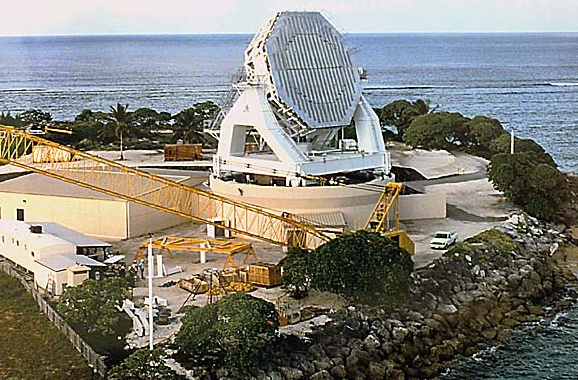
The GBR-P radar was commissioned in the 1998 year. According to data published in open sources, the confirmed detection range of ICBM warheads is at least 2000 km. At 2016, the GBR-P radar is scheduled to be upgraded, an increase in radiated power is planned, which, in turn, will lead to an increase in detection range and resolution. Currently, the GBR-P radar is involved in providing missile defense for US military facilities in Hawaii. According to statements by US officials, the deployment of interceptor missiles in this remote region is associated with the threat of North Korea’s nuclear missile strikes.
In the distant 1969 year, in the western part of the Pacific atoll Kwajalein, a powerful radar complex ALTAIR was commissioned. The Kvalzhalein radar complex is part of a large-scale ARPA project (the Advanced Research Agency - Tracking and Identification in the Far Distance via Radar). Over the past 46 years, the value of this object for the control system for space objects and the USSA has only increased. In addition, without this radar complex at the Barking Sands range, it would be impossible to conduct full-fledged tests of anti-missile systems.
ALTAIR is also unique in that it is the only radar in the Space Observation Network with an equatorial location; it can track one third of objects in the geostationary belt. Each year, the radar complex makes about 42000 trajectory measurements in space. In addition to monitoring the near-Earth space using radar from Kwajalein, research and monitoring of deep space is being conducted. The ALTAIR capabilities allow you to track and measure the parameters of research spacecraft sent to other planets and comets and asteroids approaching the Earth. So after launching to Jupiter with the help of ALTAIR, the Galileo apparatus was monitored.
The peak power of the radar is 5 MW and the average radiated power is 250 kW. According to data published by the US Department of Defense, the accuracy of determining coordinates in near-earth orbit of metal objects with an area of 1 m² is from 5 to 15 meters.
In 1982, the radar was seriously upgraded, and in 1998, the complex included digital analysis equipment and high-speed data exchange with other objects of EWS. To transmit information to the command center of the Hawaiian Islands Air Defense Zones on Guam Island from Kwajalein Atoll, a protected fiber optic cable was installed.
For the timely detection of attacking ballistic missiles and the issuance of targeting missile defense systems several years ago mobile radar with AFAR - SBX was put into operation. This station is installed on a self-propelled floating platform and is designed to detect and track space objects, including high-speed and small-sized ones. A missile defense radar on a self-propelled platform can be quickly relocated to any part of the world's oceans. This is a significant advantage of mobile radar over fixed stations, whose radius of action is limited by the curvature of the earth's surface.
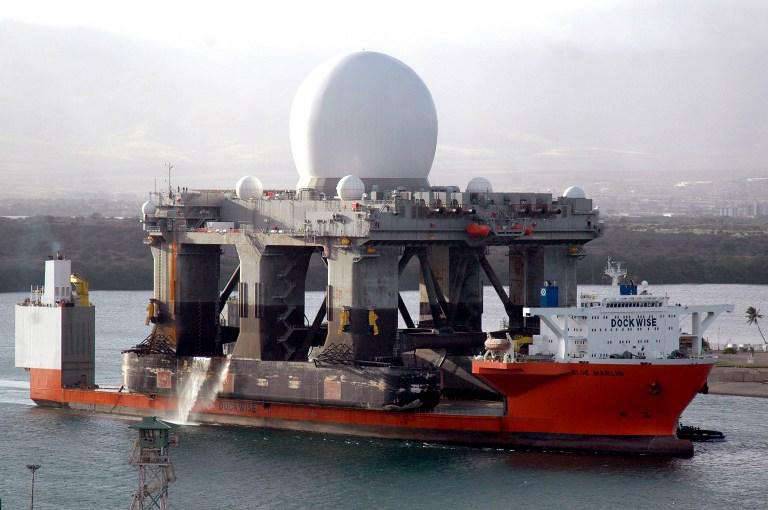
On the platform, in addition to the main radar with AFAR operating in the X-band with a radio-transparent dome with a diameter of 31 meter, there are several auxiliary antennas. The elements of the main antenna are mounted on a flat octagonal plate, it can rotate 270 degrees horizontally and change the angle of inclination within 0 - 85 degrees. According to data published in the media, the target detection range with an 1 ESR ERS is over 4 000 km, the radiated power is 135 kW.
In the port of Adak in Alaska, a special berth for the SBX radar was erected with the appropriate infrastructure and life support systems. It is assumed that the SBX, being in this place, will be in combat duty, controlling the western missile-prone direction and issue, if necessary, target designation to the American antimissile systems deployed in Alaska.
In 2004, a prototype J / FPS-5 radar was built in Japan on Honshu Island for research in the field of missile defense. The station is capable of fixing ballistic missiles at a range of about 2000 km. At present, five radar stations of this type are operating on the Japanese islands.
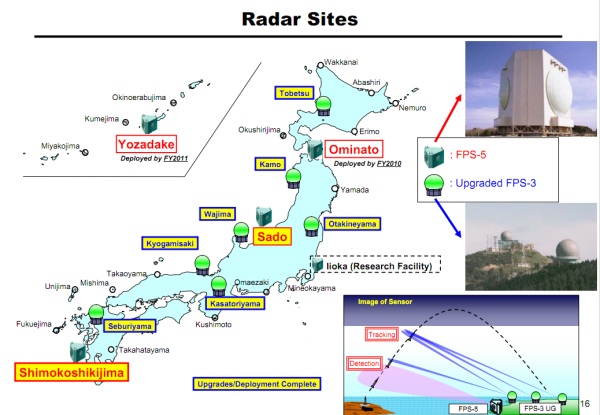
Prior to the commissioning of J / FPS-5 stations, radar with J / FPS-3 phased array in dome-shaped protective fairings was used to track missile launches in nearby areas. Detection range J / FPS-3 - 400 km. At present, they are reoriented to air defense tasks, but in case of emergency, early model radars can be used to detect enemy warheads and issue target designation to missile defense systems.
The J / FPS-5 radar has a very unusual design. For the characteristic shape of a radiotransparent vertical dome, the 34 meter-high construction in Japan received the nickname “Turtle”. Under the "tortoise shell" is placed three antennas with a diameter of 12-18 meters. It is reported that using the J / FPS-5 radar located on the Japanese islands, it was possible to track the launches of ballistic missiles from Russian strategic submarine cruisers in polar latitudes.
According to the official Japanese version, the construction of the missile attack warning system stations is linked to the missile threat coming from North Korea. However, the placement of such a large number of radar stations by the threat from the DPRK cannot be explained. Although the J / FPS-5 radar is operated by the Japanese military, information from them is continuously transmitted via satellite channels to the US Missile Defense Agency. In 2010, Japan commissioned the Yokota missile defense command post, which is operated jointly by the two countries. All this in combination with the plans to deploy the US SM-3 interceptor missiles on Japanese destroyers of the Atago and Congo type indicates that the US is trying to make Japan the forward line of its missile defense system.
The adoption and deployment of the THAAD antimissile system required the creation of a mobile radar with an AFAR AN / TPY-2. This rather compact station, operating in the X-band, is designed to detect tactical and operational-tactical ballistic missiles, escorting and targeting missile interceptors. Like many other modern anti-missile radar, it was created by Raytheon. To date, 12 radar stations of this type have already been built. Some of them are located outside the United States, aware of the deployment of AN / TPY-2 radars in Israel on Mount Keren in the Negev Desert, in Turkey at the Kuretzhik base, in Qatar at the Udeidah air base and in Japan in Okinawa.
Transportation radar AN / TPY-2 possible by air and sea transport, as well as in towed form on public roads. With the detection range of 1000 km warheads and 10-60 ° scanning angle of the site, this station has good resolution enough to highlight the target against the background of debris from previously destroyed missiles and separated stages. According to Raytheon advertising information, the AN / TPY-2 radar can be used not only in conjunction with the THAAD complex, but also as part of other anti-missile systems.
One of the key elements of a ground-based missile defense system planned for deployment in Europe is the Aegis Ashore radar. This model is a land version of the AN / SPY-1 naval radar, coupled with combat elements of the Aegis BMD system. The AN / SPY-1 phased array radar is capable of detecting and tracking small targets as well as targeting interceptor missiles.
The main developer of ground-based radar missile defense Aegis Ashore is the corporation Lockheed Martin. The Aegis Ashore design is based on the latest version of the Aegis marine system, but many auxiliary systems have been simplified to save money.
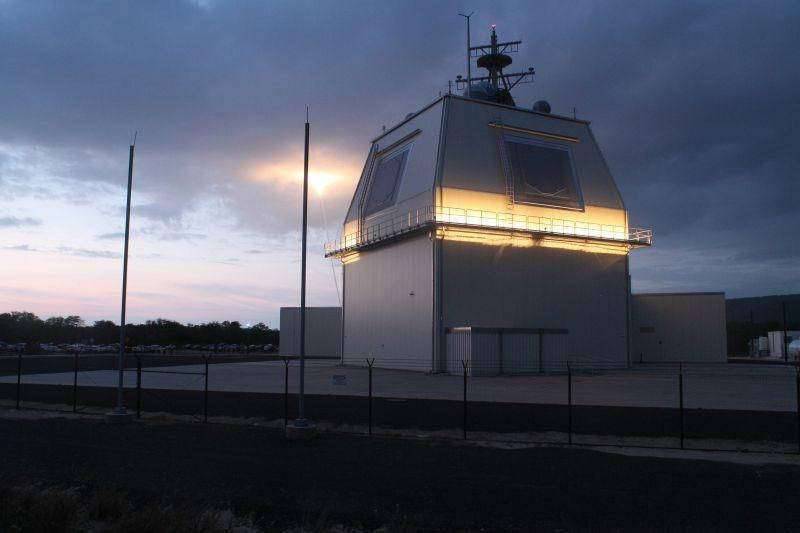
The first ground-based radar Aegis Ashore in April 2015 was put into trial operation in April 2015 on the island of Kauai, near the atoll of Kwajalein. Its construction in this place is connected with the need to develop the ground-based missile defense component and with the testing of the SM-3 interceptor missiles at the Baring Sands missile test site in the Pacific.
Plans have been announced for the construction of similar stations in the United States in Moorstown, New Jersey, as well as in Romania, Poland, the Czech Republic and Turkey. The most advanced work at the Air Force base in Deveselu in southern Romania. The construction of the Aegis Ashore radar and the launch sites for interceptor missiles is completed here.
The Aegis Ashore radar four-story ground-structure superstructure is made of steel, its mass exceeds 900 tons. Most of the elements of the anti-missile facility are modular. All elements of the system were pre-assembled and tested in the US, and only then transported and mounted in Deveselu. In order to save money, the software, with the exception of communication functions, almost completely corresponds to the ship version.
In December, 2015, the ceremony of handing over the technical complex to the US missile defense agency took place Currently, the radar facility in Deveselu is working in test mode, but does not carry combat duty. It is expected that in the first half of 2016, the first part of the European segment of the missile defense system will be finally put into operation. The management of anti-missile operations is planned to be carried out from the operational center at the American Ramstein Air Base in Germany. The means of fire destruction of the complex should be the 24 anti-missiles "Standard-3" mod. 1B.
Also in the near future it is planned to build a similar facility in Poland in the area of Redzikovo. According to the American plans, its commissioning should take place before the end of 2018. In contrast to the Romanian object, the anti-missile complex in Redzikovo is planned to be equipped with the new Standard-3 antimissiles mod. 2A.
To record the fact of the launch of ballistic missiles from the territory of countries possessing rocket technologies, and to bring the missile defense system in a timely manner into combat readiness in the United States, a program is being implemented to monitor the earth's surface based on new-generation spacecraft. Work on the creation of the SBIRS system (born Space-Based Infrared System - Space-based Infrared System) began in the middle of the 90-s. The implementation of the program was supposed to end in 2010 year. The first SBIRS-GEO satellite, GEO-1, was launched in 2011. As of 2015 year, only two geostationary satellites and two upper echelon satellites in elliptical orbits were put into orbit. By 2010, the cost of implementing the SBIRS program has already exceeded 11 billion.
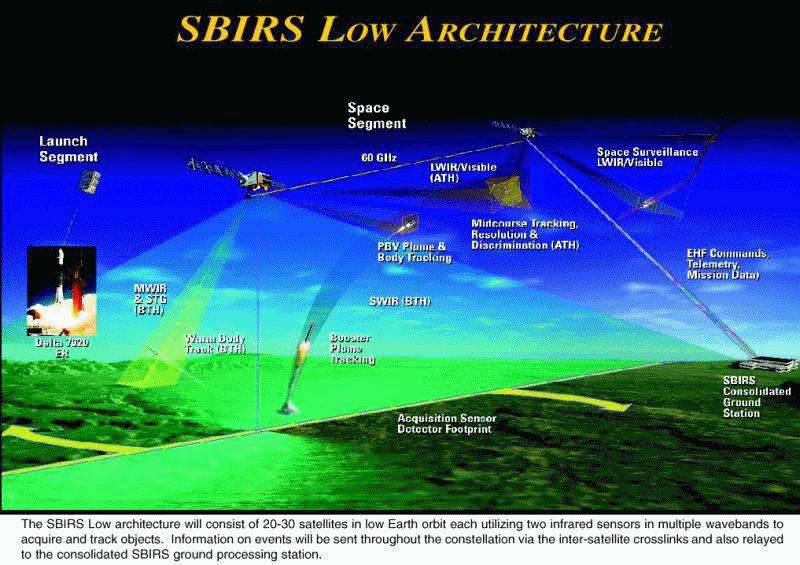
At present, the SBIRS spacecraft are operated in parallel with the satellites of the existing SPRN system - DSP (eng. Defense Support Program). The DSP program started in the 70-ies as an early warning system for launches of intercontinental ballistic missiles.
The SBIRS satellite constellation will consist of at least 20 continuously operating spacecraft. With the help of infrared sensors of a new generation, they should not only fix the launch of ICBMs less than 20 seconds after launch, but also carry out preliminary trajectory measurements and identify warheads and decoys in the middle section of the trajectory. The satellite constellation will be managed from control centers at Buckley Air Base and at Sriver Air Base in Colorado.
Thus, with the practically formed ground-based radar component of the missile attack warning system, the space component of the national missile defense under construction is still behind schedule. This is partly due to the fact that the appetites of the American military-industrial complex turned out to be more opportunities for a huge defense budget. In addition, not everything is smooth with the possibilities of placing heavy spacecraft into orbit. After the Space Shuttle program was closed, NASA’s US space agency was forced to attract private aerospace companies on commercial launch vehicles to launch military satellites.
Commissioning of the main elements of the missile defense system should be completed by 2025 year. By that time, in addition to building an orbital constellation, it is planned to complete the deployment of interceptor missiles, but this will be discussed in the third part of the review.
To be continued ...
Based on:
http://www.designation-systems.net/dusrm/index.html
http://www.globalsecurity.org/space/systems/havestare.htm
http://www.globalsecurity.org/military/index.html
http://www.defenseindustrydaily.com/antpy-2-ground-radar-07533/
http://army-news.ru/2015/06/nachaty-ispytaniya-pervogo-obekta-pro-v-rumynii/
https://www.spaceflightnow.com/atlas/av037/geofactsheet.pdf
ttp: //fas.org/spp/military/program/nssrm/initiatives/altair.htm
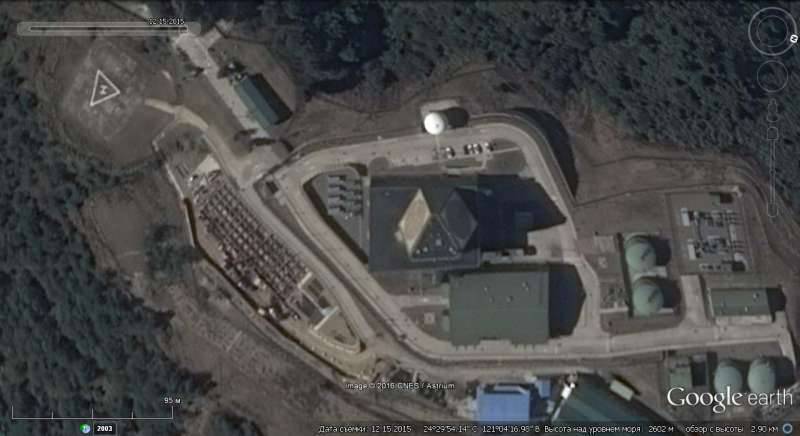
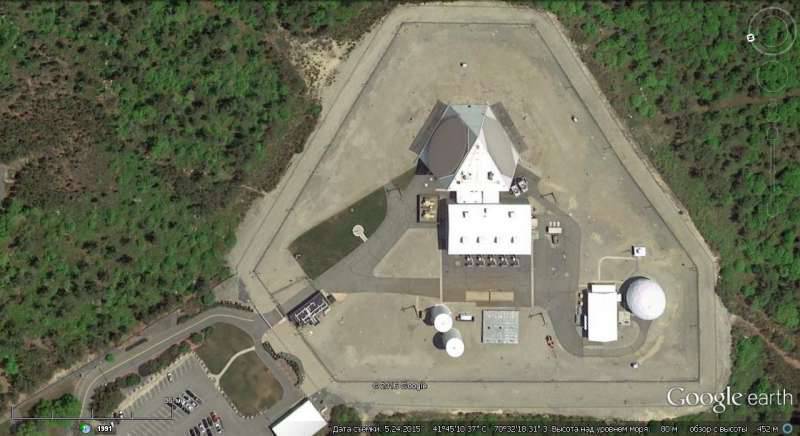
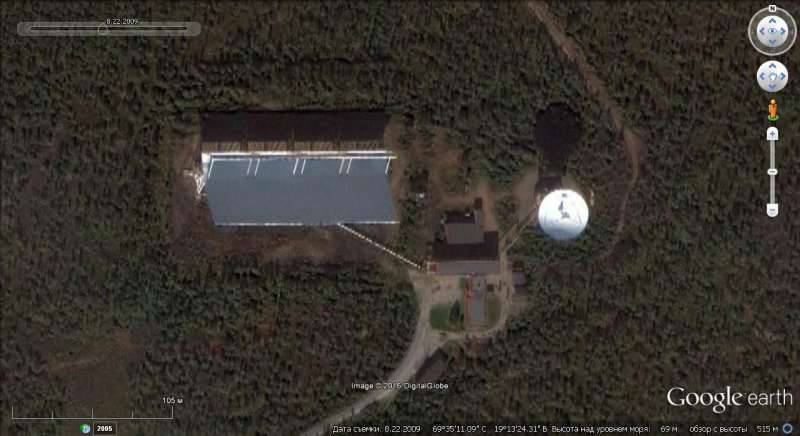
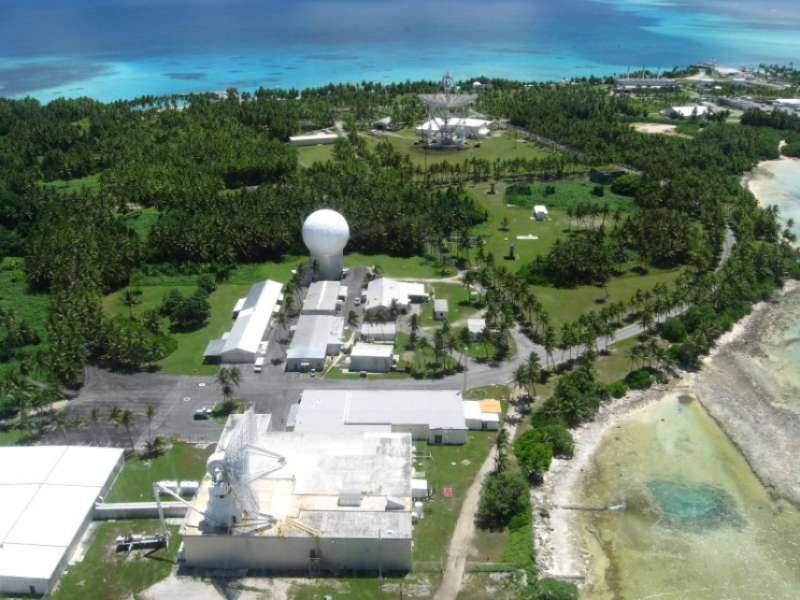
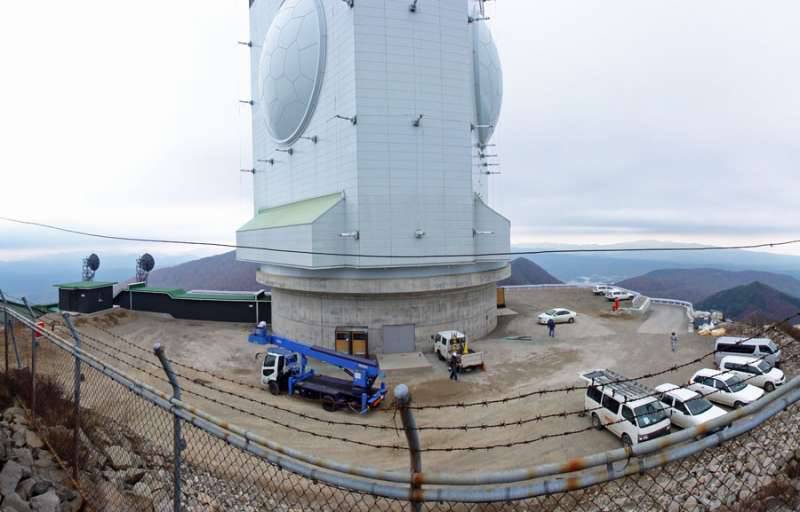
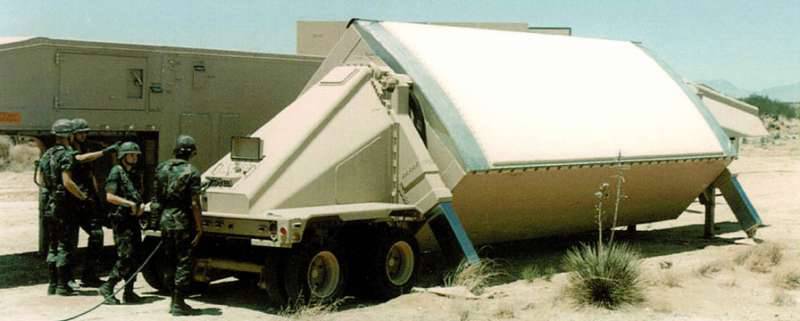
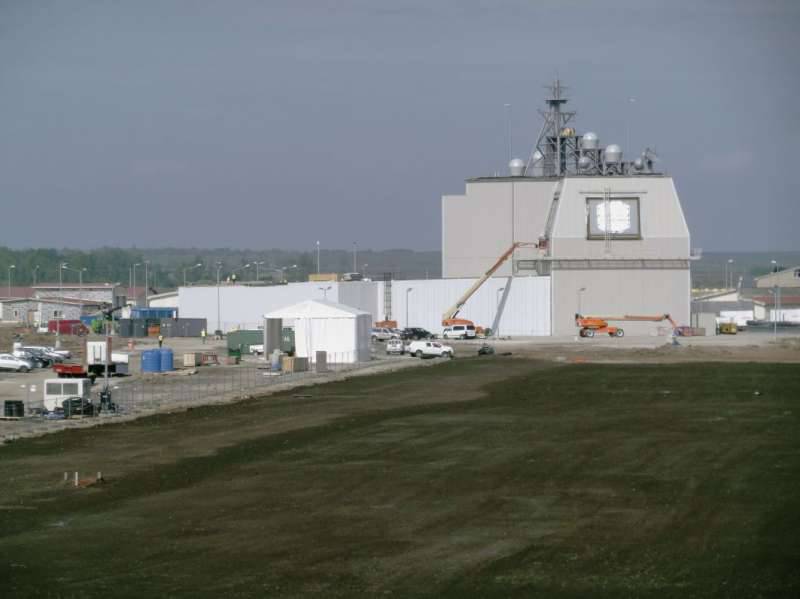
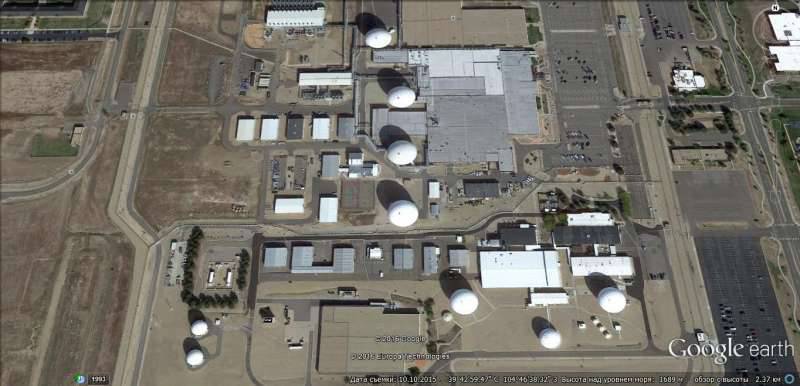
Information